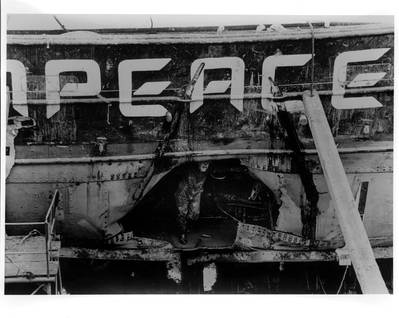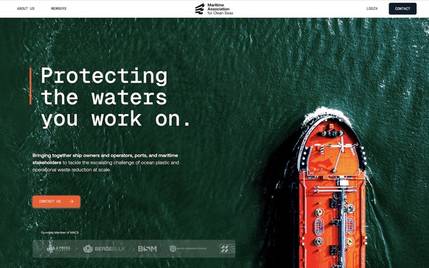Rainbow Warrior Remembered 40 Years After Bombing
A dawn ceremony has been held in Auckland, New Zealand, to commemorate the 40th Anniversary of the bombing of the original Rainbow Warrior.
On July 10, 1985, French Government agents used two bombs to sink the Rainbow Warrior at Marsden Wharf in Auckland Harbour. It came at the height of the Greenpeace campaign to stop French nuclear testing in the Pacific.
The ship was destroyed and one crewmember killed.
Greenpeace tells the story:
10 July 1985. The Greenpeace ship the Rainbow Warrior is moored in Auckland, New Zealand – ready to confront French nuclear testing in the Moruroa Atoll.
It’s close to midnight. The captain, Pete Willcox, and many other crew members are already asleep. A few others, including the photographer Fernando Pereira, are still chatting around the mess-room table, sharing between them the last two bottles of beer.
Suddenly, the lights go out. There’s the sharp crack of breaking glass. Then, a sudden roar of water. The crew’s first thought: We’ve been hit, possibly by a tug.
Then, there’s a second explosion.
Those already on deck scramble up the ladder or leap to safety on the wharf. Within minutes, they see the ship’s steel masts tilt towards them…
“I stood there looking at the boat with all of these bubbles coming out of it,” Captain Pete Willcox would later recall. “That’s when Davey [Edwards] said Fernando is down there. I remember arguing with him, saying no, Fernando had gone to town, and that’s what he always did. No, he said. Fernando is down there.”
The Portugal-born Greenpeace photographer Fernando Pereira had joined the crew of the Rainbow Warrior to document the French nuclear testing and bring his photographs to the world.
He was caught in a rush of water that night and drowned. He had just celebrated his 35th birthday.
The Rainbow Warrior wasn’t hit by a tug, of course. In an attempt to “neutralise” the ship ahead of its planned protest, French secret service agents in diving gear had attached two packets of plastic-wrapped explosives to it, one by the propeller, one to the outer wall of the engine room.
Initially, the French government denied all knowledge of the operation, but it soon became obvious that they were involved. Eventually, Prime Minister Laurent Fabius appeared on television and told a shocked public: “Agents of the DGSE (Secret Service) sank this boat. They acted on orders.”
Only two agents ever stood trial. Dominique Prieur and Alain Mafart, who had posed as Swiss tourists, pleaded guilty to charges of manslaughter and wilful damage, attracting sentences of 10 and seven years. A UN-negotiated settlement meant that they were transferred to Hao Atoll, a French military base in French Polynesia.
They were both released within less than two years.
The spy who infiltrated the Greenpeace New Zealand office ahead of the bombing, Christine Cabon, evaded arrest in Israel. She hasn’t been seen since. The whereabouts of the combat frogman with the alias Jean-Michel Berthelot – one of the two divers believed to have planted the bombs – are unknown.
Most of those involved in what happened that night in an Auckland harbour have simply disappeared.
After the bombing, the Rainbow Warrior was given a final resting place at Matauri Bay, in New Zealand’s Cavalli Islands, where it has become a living reef, attracting marine life and recreational divers.
Tangata whenua of Matauri Bay, Ngati Kura, generously offered to provide a final resting place for the Rainbow Warrior, and on December 2, 1987, the ship was scuttled to form a living memorial at 34°58.5’S 173°56.0’E – a short distance from this spot. It is now a popular dive spot and a fish sanctuary.
A second Rainbow Warrior was launched in 1989. After years of campaigning, she was retired in 2011 and replaced the same year with Greenpeace’s third, but first purpose-built, Rainbow Warrior – funded by supporters from all around the globe, including many New Zealanders.















